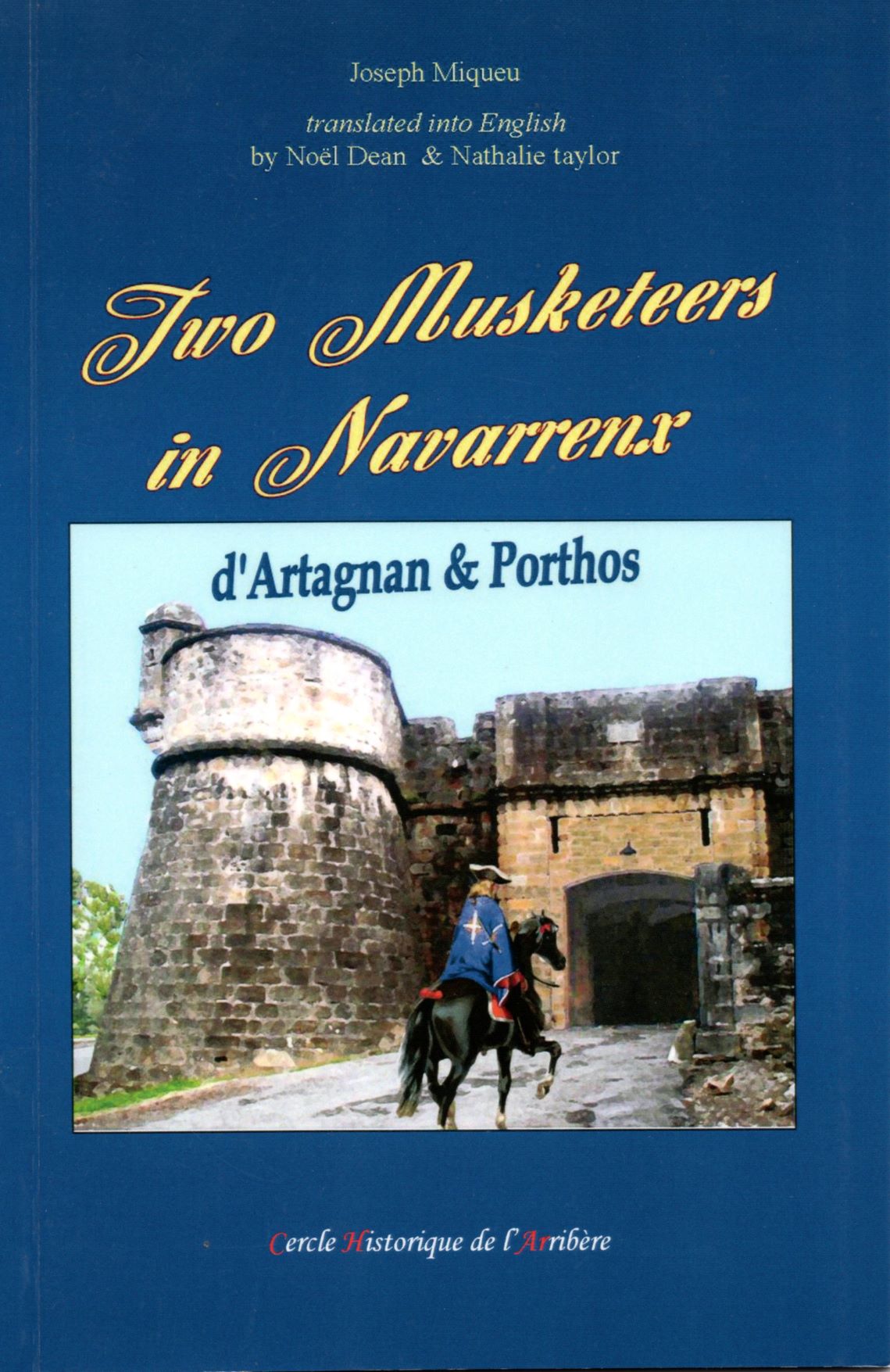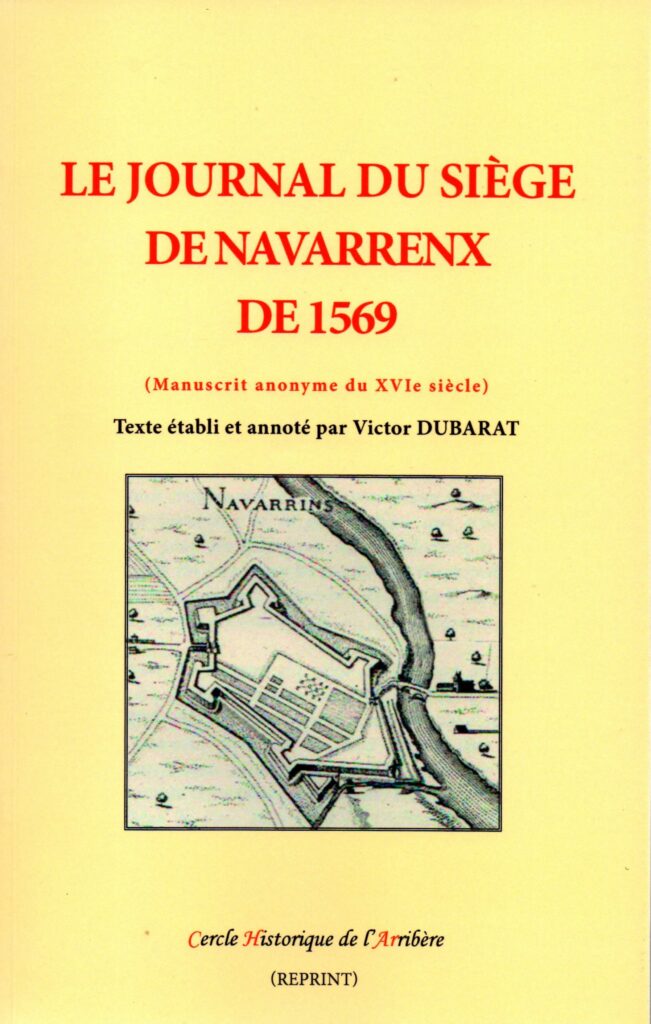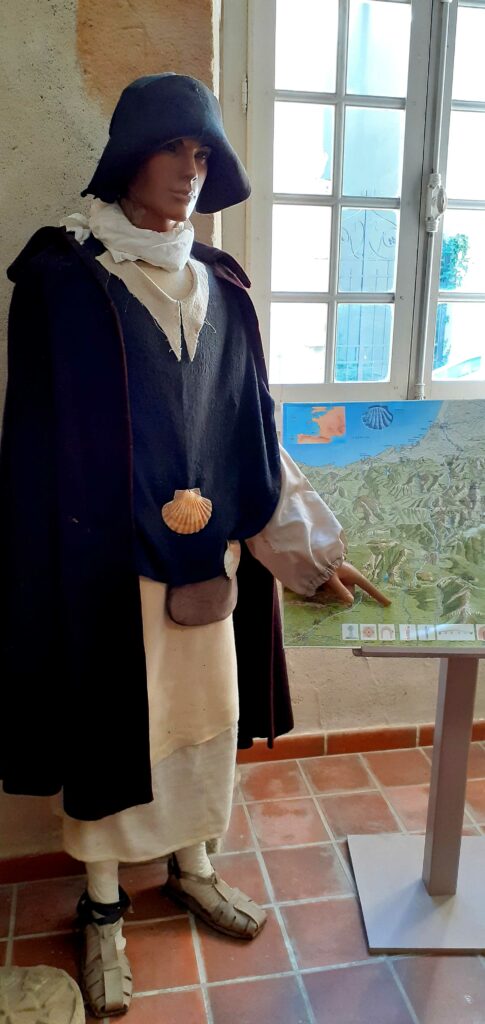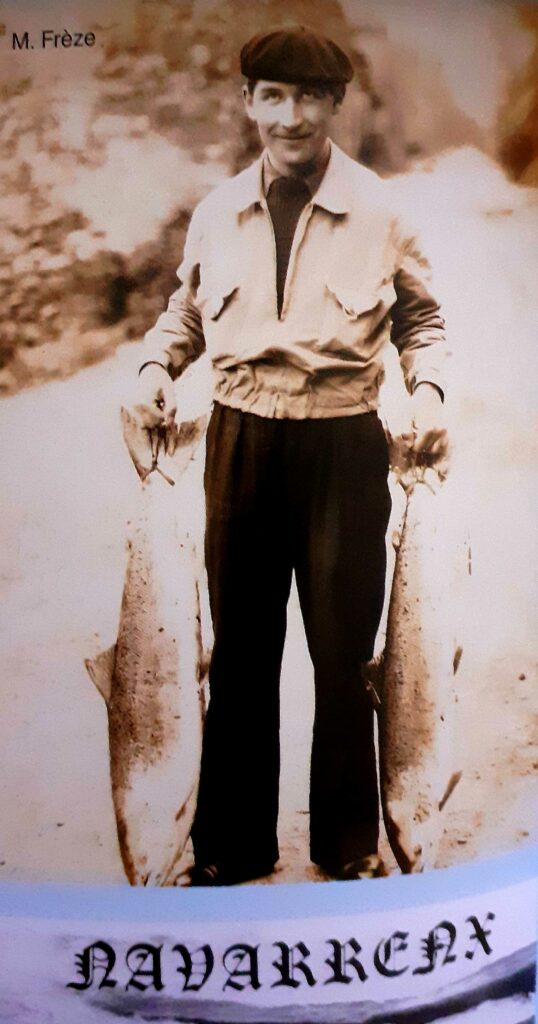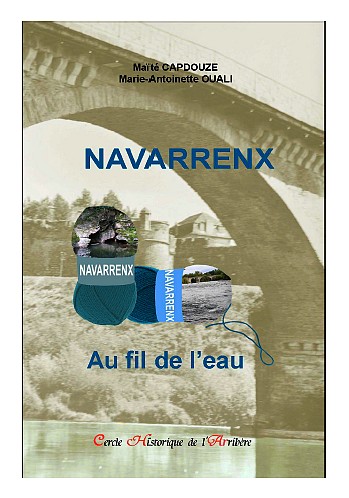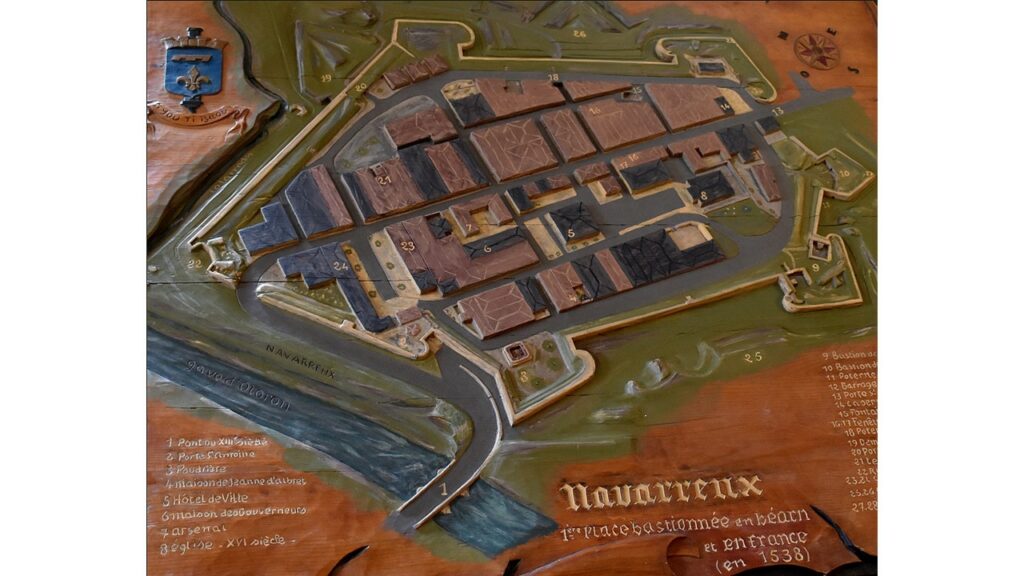
The Navarrenx Heritage Centre was created to promote and share the history and culture specific to the town and its surroundings with all visitors. Collections, models, maps and plans represent the history and evolution of the city from its origins to the present day. These have been brought together or created by the local association “La compagnie des Echarpes Blanches” (the White Scarves Company) in conjunction with the C.H.Ar..
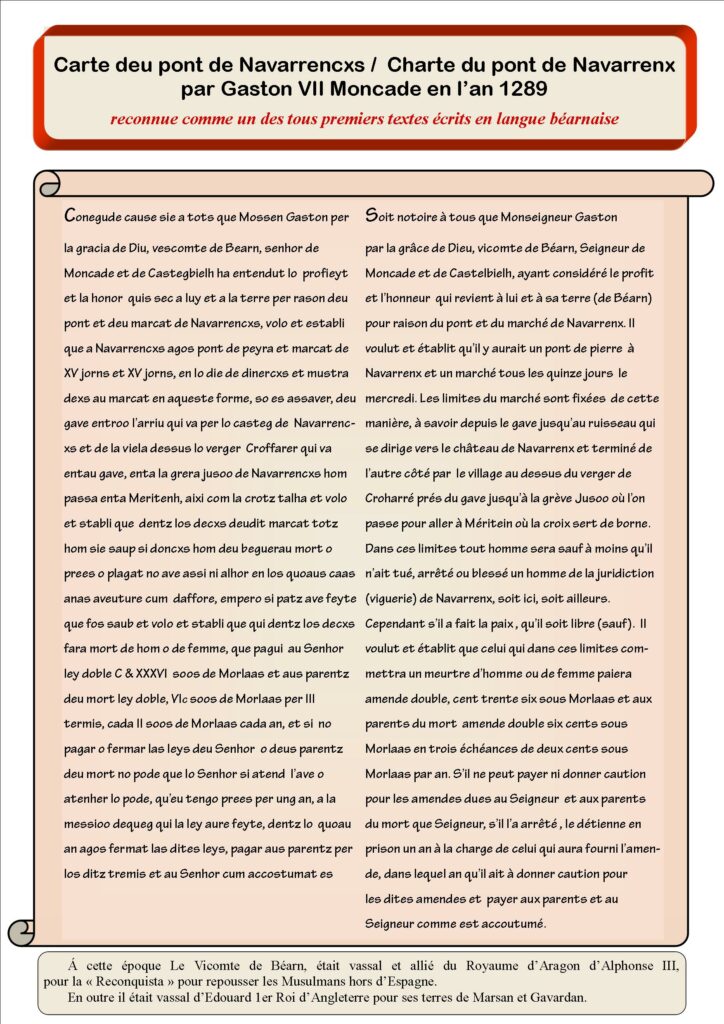
The existence of Navarrenx can be traced from the first century of the Christian era, but the history of the town begins with its expansion during the reign of Viscount Centule IV (1022 — 1058). Located near a ford crossing the Gave d’Oloron in the border area between Bearn and Soule, the town occupies a strategic position controlling a major communication route. It came under the control of the de Moncada viscounts, and grew in importance during the reigns of Viscounts Gaston VI and Gaston VII. In 1180 Gaston VI ordered the construction of a wooden bridge, a Commandery for the order of the Hospitallers, a hospital for the pilgrims and a chapel, Saint- Antoine. Gaston VII annexed the Charter of the bridge of Navarrenx to the “Fors de Bearn” (legal documents governing the region) on July 14 1289 and ordered the construction of the “Casterasse”, fortifications surrounded by a moat to protect the bridge.
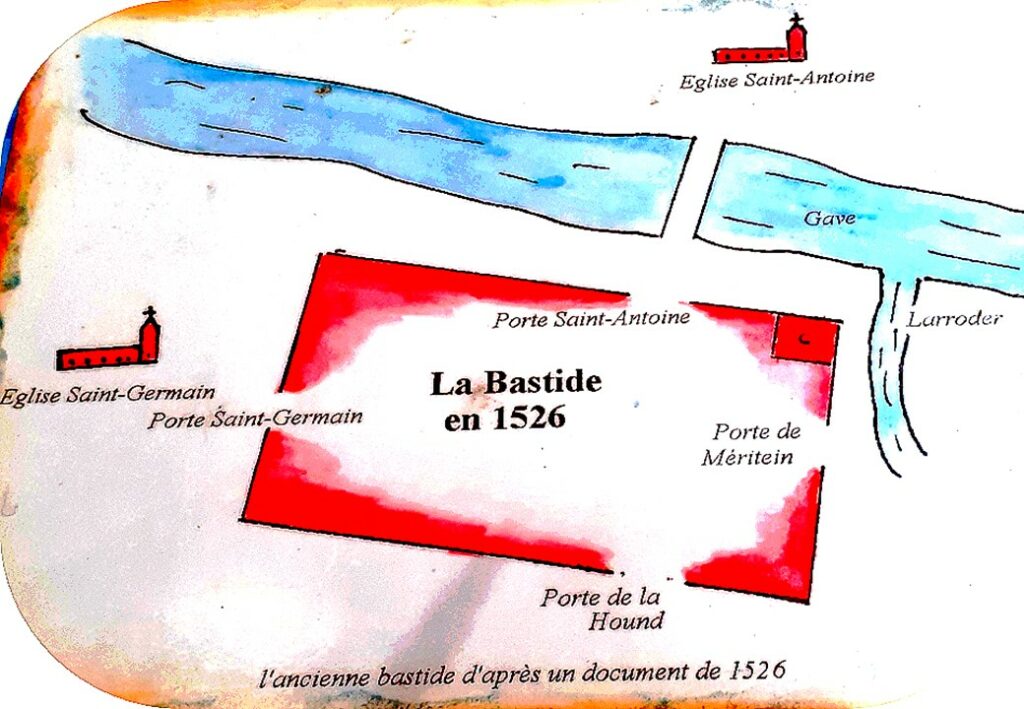
In 1316, the medieval town was given the status of a “Bastide” (a fortified town) and thus also the privileges of the Fors de Morlaàs, the charter of the capital of Bearn in the eleventh and twelfth centuries, granting its residents freedom and various privileges. This status authorized a municipal organization with Jurats (magistrates), guards (responsible for public safety) and Clavers (treasurers or gate keepers) chosen by the inhabitants. Navarrenx was developed surrounding it with fortifications and organizing urban life : the fortified town is created !
A Bastide is a “new town” at the time of the Middle Ages. Navarrenx is one of five fortified towns whose foundation was ordered by Viscountess Margaret, third daughter of Gaston VII de Moncade, in a charter dated August 1316.
« Be it known to all that we, Margaret, Countess of Foix by the Grace of God, Viscountess of Bearn and Marsan, grant and give forever, on our behalf and that of our successors with their offspring, the rights and customs of the city of Morlaas to the settlers (poblans) of the walled town of Navarrenx who are or will be present in all times »
The fortified town of Navarrenx as we know it today is partly the result of becoming a Bastide. In addition to the freedom granted to inhabitants, it had a real impact on the layout of the town. This resulted in a central marketplace, the disposition of streets at right angles and the regularity of the subdivision of the Bastide into similarly sized lots which are still visible to this day in Navarrenx.
The charter of 1289 established a market on Wednesdays once every two weeks.
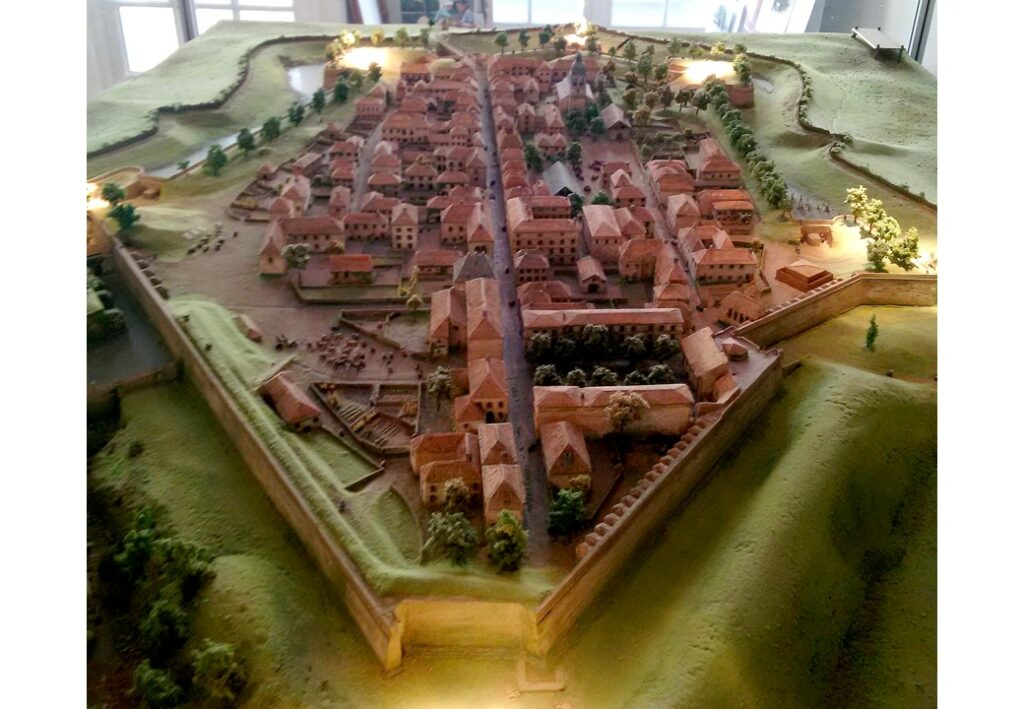
In 1510, the King of France had begun to modernise his fortresses in Aquitaine. It was at this time that the cities of Bayonne, Dax and Bordeaux were renovated. Inspired, and sometimes directed, by architects from Italy such as Anchises of Bologna, a whole generation of experts from across the Alps, a small but influential band, remodeled French fortresses between 1535 and 1540. One of them, Fabrizio Siciliano, was chosen by Henri II d’Albret, King of Navarre and ruler of Bearn in 1538. A companion of François 1st during the military campaigns in Italy, he recognized the importance of modernizing the military equipment. He tasked Siciliano to address the fortification of the town of Navarrenx which he wanted to become the foremost stronghold of Bearn against the Spanish Navarre and the nearby French Soule. The high medieval towers were vulnerable to artillery, the Italian engineers preferred « boulevards » or bastions. The rounded shapes gave way to sharp corners and earthen works competed with the stone and brick. Completed in 1549, Navarrenx, with its « flexible » ramparts supplemented by high embankments and sharp corners protected by bastions and single-sided or ornamented semi-bastions, was an example of military architecture almost unique in France at the start of the sixteenth century.
Even if the Bearnese were not subjected to the horrors of the civil war that shook France for almost half a century, they did face the French invasion of 1569.
The conflict was marked by the two-month siege of the fortified town of Navarrenx, which was the last defense against invasion, and then the bloody clashes of Orthez. In 1569, Captain Terride was placed in charge of the catholic troops by the king of France who wished to annex the sovereign state of Protestant Bearn then governed by Jeanne d’Albret. When he attacked Navarrenx, the high quality of the defenses prevented him from taking the town inspite of the 1800 artillery charges fired at the walls. Thus Navarrenx ultimately allowed the Bearnese forces of Jeanne d’Albret, commanded by baron d’Arros, to maintain their independence for some years.
Inspite of the fortifications, which required the destruction of some of the medieval buildings, Navarrenx can still be recognized as a country town that has been fortified.
In the footsteps of the pilgrims :
In the eleventh century, Navarrenx became the preferred passage of the route from Le Puy en Velay for the pilgrims to Compostela. Located on a road leading to the Pyrenean passes and the great medieval pilgrimage route to Santiago de Compostella, Navarrenx had a hospital for travelers and, for those wanting to cross the Gave, a bridge, for which the foundations were laid by Gaston VII Moncado in the mid-thirteenth century as were those of Sauveterre and Orthez. Even today the tradition of St Jacques in Navarrenx attracts nearly 11,000 pilgrims a year.
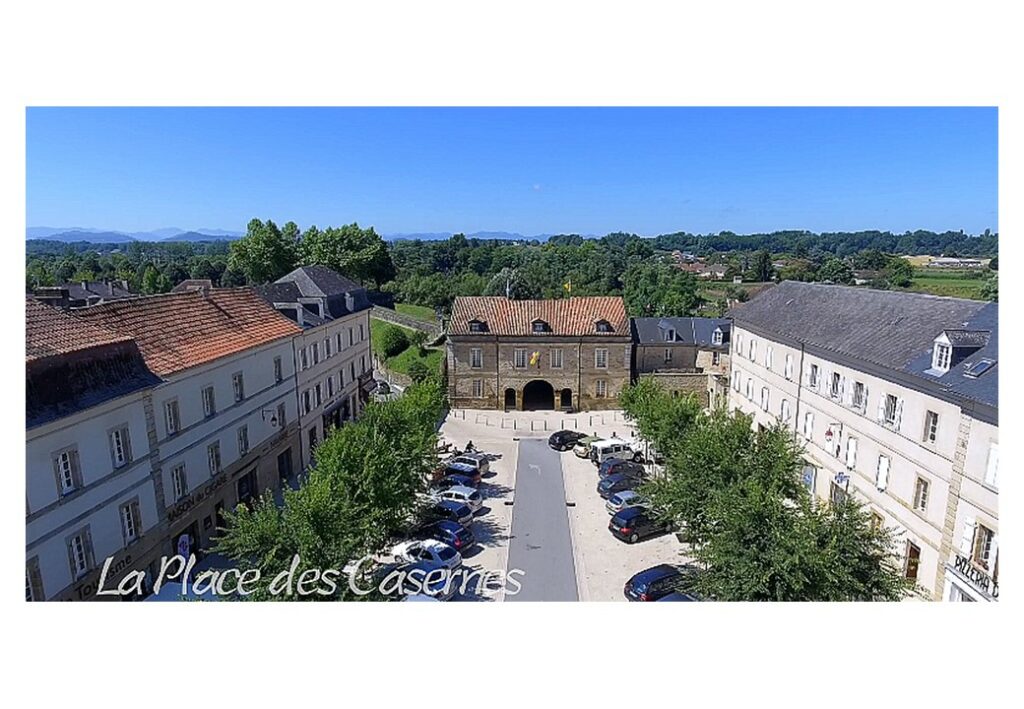
During the sixteenth century, Navarrenx still retained its position as a military garrison town. It underwent new developments with the construction of barracks and a major, new arsenal. But, in 1814, the blockade of the city by a Spanish division of Wellington’s army, pursuing that of Marshal Soult during its retreat from Spain, revealed the weaknesses of the bastion against the siege tactics and artillery technology of the 19th century. Its role in the defense of the Spanish border had become negligible because it was located too far away.
Thus the military status of the town was withdrawn in 1868 by imperial order and the garrisons were emptied.
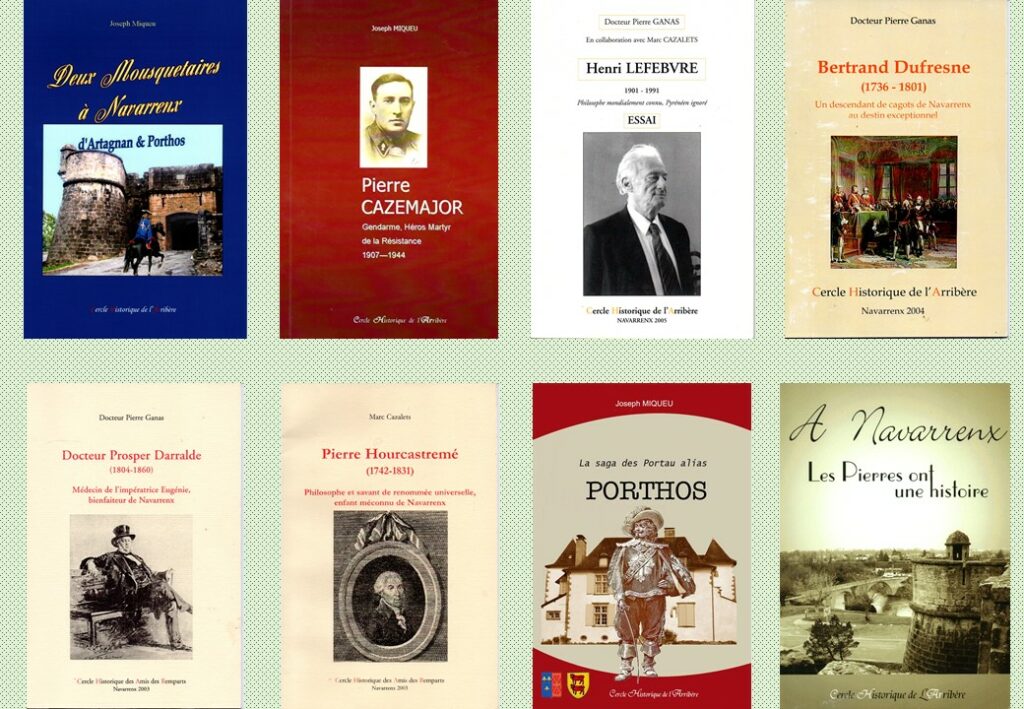
Among the characters that have marked the history and heritage of Navarrenx and the surrounding area, those of particular note include:
– Baron Bernard d’Arros, Lieutenant of the Queen of Navarre during the siege of 1569
– Dr. Prosper Darralde, Physician of the Empress Eugenie de Montijo (1804 -1860) who provided the beautiful reproductions of paintings by Masters, on display in the Church, and his son who bequeathed the fine mansion to the Commune.
– Pierre Cazemajor for his courageous contribution to the French Resistance as a gendarme during the second world war.
Other characters of international repute include the Professor of Sociology Henri Lefebvre, scholar and philosopher Pierre Hourcastremé, Bertrand Dufresne , a cagot with an exceptional life, as well as Pierre Palassou, learned mineralogist and Canon Laborde, a regional historian, from the Ogenne-Camptort area.
But it goes without saying that the most famous of the Governors of the Bastion, was a certain D’Artagnan, Paul de Batz de Castelmore, the brother of the hero in Alexandre Dumas’ famous novel. And his colourful Mousquetaire, Porthos, was the Master of the gunpowder room at the end of his career.
For more information go to the website: https://char-navarrenx.fr/categorie-produit/librairie-char/
Navarrenx, capital of salmon fishing
The valley of the Gave d’Oloron is renowned for the plentiful salmon in its rivers, a consequence of the purity of the highly oxygenated waters in the mountain streams. Throughout history salmon was a staple diet of the local inhabitants. Towards the end of the Middle Ages the salmon trade boosted the local economy when Louis XIV declared salmon to be a “Royal Fish”. In 1920, the Cercle Anglais in Pau oversaw the management of the Gaves and introduced line fishing, banning mechanical fishing at the same time. The 1950s and 60s were the heyday for angling.
An observatory was installed at the Masseys hydroelectric plant in 2011 with a fish pass to count and identify the different species of fish.
During the 1930s there was a national competition for the largest fish. Superseded by a European Championship in 1955 this subsequently became the World Championship in 1958 thanks to a group of local fishing enthusiasts!
When Navarrenx had its inland port…
In 1670 the forests of France became the sole source of timber for the French Royal Navy: the forests of the Aspe valley were exploited until 1783 and those of the Ossau valley until 1792. The tree trunks were floated along the gave d’Oloron and Navarrenx was the first stopping point where the crews were changed.
Oxen were used to cart the trunks as far as the specially created port at Athas. From March to July as the snows melted, 10 rafts per day (300 in total per season), each with 6 men, left for Navarrenx on the fast-flowing river.
The section from Athas to Navarrenx was the most dangerous as many dams had to be passed using “passelis”, slides with slopes of varying severity. The team of rafters would hand over at Navarrenx and took two days to return on foot.
The second section from Navarrenx to Peyrehorade was also difficult as the channel was tighter and therefore more rapid. From Peyrehorade to Bayonne care was necessary to avoid any sand banks. Once at Bayonne, the trunks were loaded on to boats and taken to the Royal Docks.
Pine wood was used to make masts, beech wood for the oars and beams and the harder box wood was used for pulleys, pins and spindles.
The inhabitants of Navarrenx were well reputed as rafters as far as Peyrehorade….as well as for walking back to fetch the next convoy.
https://char-navarrenx.fr/produit/two-musketerers-in-navarrenx/